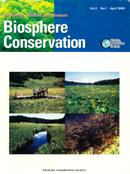2 巻, 1 号
選択された号の論文の6件中1~6を表示しています
- |<
- <
- 1
- >
- >|
Original Papers
-
原稿種別: Original Papers
1999 年 2 巻 1 号 p. 1-9
発行日: 1999年
公開日: 2017/10/04
PDF形式でダウンロード (768K) -
原稿種別: Original Papers
1999 年 2 巻 1 号 p. 11-19
発行日: 1999年
公開日: 2017/10/04
PDF形式でダウンロード (982K) -
原稿種別: Original Papers
1999 年 2 巻 1 号 p. 21-34
発行日: 1999年
公開日: 2017/10/04
PDF形式でダウンロード (1209K) -
原稿種別: Original Papers
1999 年 2 巻 1 号 p. 35-44
発行日: 1999年
公開日: 2017/10/04
PDF形式でダウンロード (744K)
Status Reports
-
原稿種別: Status Reports
1999 年 2 巻 1 号 p. 45-49
発行日: 1999年
公開日: 2017/10/04
PDF形式でダウンロード (397K) -
原稿種別: Status Reports
1999 年 2 巻 1 号 p. 51-58
発行日: 1999年
公開日: 2017/10/04
PDF形式でダウンロード (611K)
- |<
- <
- 1
- >
- >|
